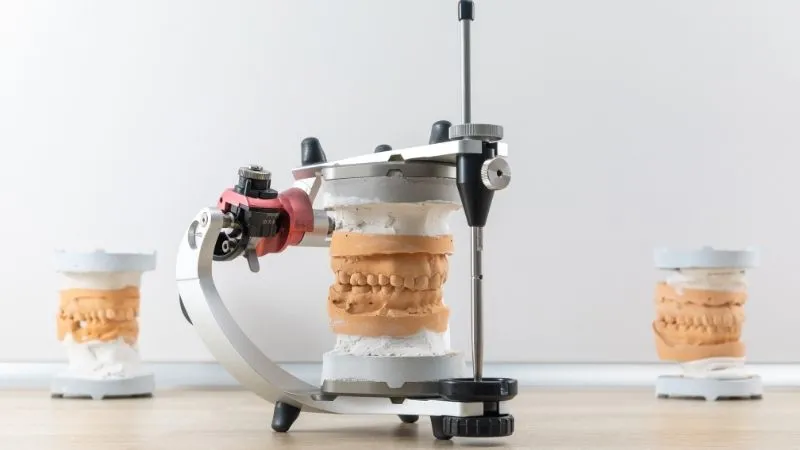A Comprehensive Solution for Tooth Replacement
You have decided to get All on 4 dental implant treatment but you are undecided about which materials to choose. To make your choice easier, we have prepared a guide and explained the components and material options of all on 4.

The best material for All on 4 implants depends on the individual's needs, age, budget and expectations. While a zirconium dental bridge is reasonable for someone who is young and on a budget, an acrylic dental bridge may be a more suitable option for someone who is older and on a low budget.
Implant looks like a screw and acts as a root for the artificial tooth. The abutment sits on top of the implant and holds the artificial tooth in place.
Titanium is the most preferred material for these structures. Titanium materials are very durable and biocompatible. Recently, zirconium (ceramic) implants have been developed. The price of these implants is slightly higher and less durable than titanium, but there is no risk of allergies. It is a choice for those who do not want to use a metal structure.
Acrylic is a type of thermoplastic with a hard and transparent appearance. This material makes dental bridges look similar to natural teeth but is not resistant to high pressure. It is suitable for people who do not have problems such as jaw clenching or teeth grinding and who can use their new teeth very gently. If it breaks, it needs to be repaired or replaced. This fragile and sensitive structure of acrylic material is its biggest disadvantage.
Besides, it also has some positive aspects. It provides a very natural appearance and is very suitable for personalisation. It provides a price advantage compared to other bridges.
Porcelain material stands out with its biocompatible structure and is very similar to natural teeth by reflecting light very well. In addition to this perfect harmony, porcelain crowns are highly resistant to staining. It is more costly than acrylic dentures. But it is more durable than them. With careful use, you can use porcelain for more than 10 years.
Nanoceramics are ceramic materials developed with nanotechnology. Therefore, while providing a more natural and aesthetic appearance than ceramic materials, its durability has also increased. Due to its ceramic structure, it does not cause discolouration in the gums.
Zirconia (ZrO₂), i.e., zirconium oxide, is a highly durable ceramic material. It is widely used in dental crowns and crown treatments. They are characterised by their durability and robustness and provide high performance even with grinding teeth. Zirconium dental bridges can be used for more than 20 years with proper care and dentist controls. They are biocompatible due to their ceramic structure.
Crystal Ultra is a high-tech product made of a nanoceramic material. Crystal Ultra is a more robust and durable material than zirconia. This ensures long-term use. In short, Crystal Ultra is a star in aesthetics and durability.
PEEK (Polyetheretherketone) is an extremely durable polymer. It is preferred in areas requiring high durability. The use of PEEK for dental restorations provides very high strength but is not good enough in terms of aesthetic appearance. It cannot adequately mimic natural teeth and requires a high cost. It is not preferred in areas such as dental restoration where aesthetics are important.
All on 4 has a wide range of material types for dental implants. But each of them has some pros and cons. Individuals can familiarise themselves with the materials by consulting this guide. However, in the end, it should be left to the expert.
Individuals explain all their expectations and budgets to the dentist when choosing the best material for All on 4 treatment. The dentist then recommends a material for the patient.